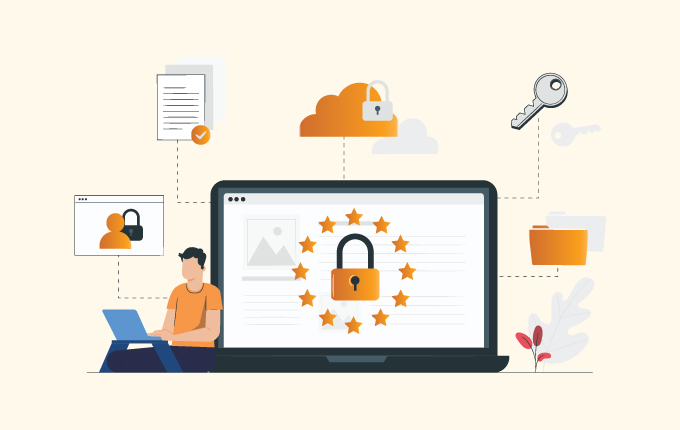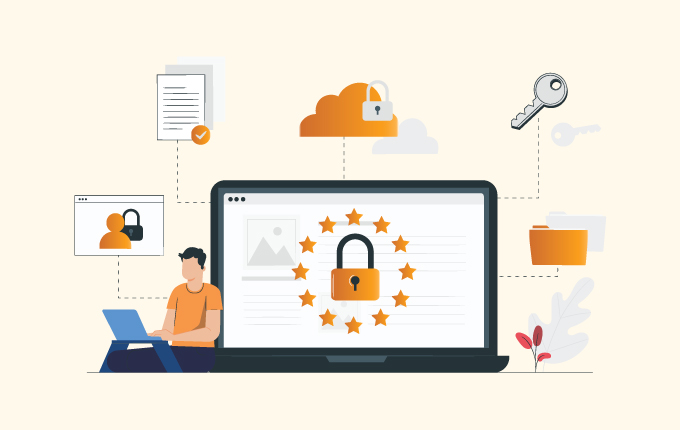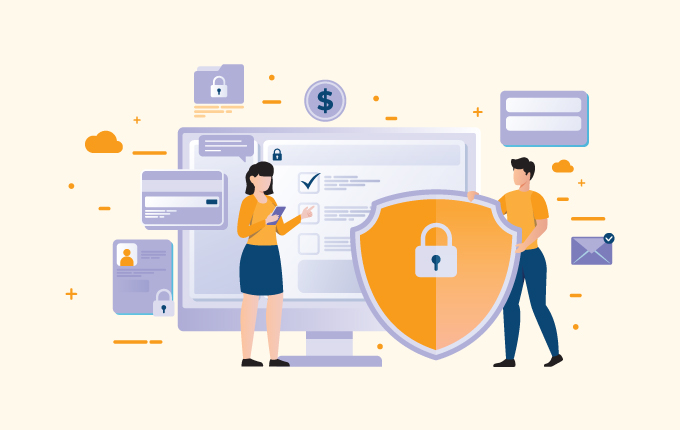Business IntelligenceCloud ServicesIT Consulting & StrategySecuritySoftware DevelopmentTech Support & Managed IT ServicesConstructionEducationFinanceHealthcareLegalNon-ProfitsReal EstateStartups
More and more, security experts are pushing the idea that keeping your business and data safe can’t be an afterthought. When you take a reactive approach, you’re always going to be struggling to catch up because you’re only acting on security problems when something goes wrong.

However, if you’ve created a system where your IT infrastructure is put together with a security-first approach, you’re not going to be immune to a cyberattack, but you can mitigate the damage before it even happens.
What is your IT infrastructure?
Your IT infrastructure is everything tech-related in your organization. Typically, these are broken down into two different categories: hardware and software. Your hardware is all the physical components, like servers, printers, cables, connected IoT devices, computers, phones, and other peripherals. The software infrastructure is the programs and platforms you use in your business.
Beyond the traditional IT infrastructure, most businesses also have cloud infrastructure to consider as a part of their tech stack.
There’s yet another layer that should include, or at least acknowledge, the people inside your businesses and also take any processes that you have related to your technology. These aspects are important because your infrastructure is often only as good as the people who are using and maintaining it, which is why processes should be an integral part of your infrastructure.
The importance of strong processes is that it helps you create healthy habits around keeping the technology that powers your business safe, secure, and working the way it was designed to.
What is a security-first approach?
A security-first approach means that every decision you make regarding your IT infrastructure (and your entire business, really) is through the lens of security. You’re not making a decision and then figuring out what the security needs are, you’re learning about the security needs first. This approach helps ensure that you’re not introducing tech that might weaken your security profile, but also that you understand what is needed to make sure everything is safe.
It helps to ask yourself questions like the ones below.
What attacks are possible?
Any time you introduce a new piece of technology into your business, you should fully understand what possible attacks it’s vulnerable to. There are a couple of reasons for this. The first is that you want to be you know what it’s going to take to integrate something into your tech stack. If it’s a super vulnerable piece of hardware/software, it may not be worth it.
Is it up to date?
You’re not likely going to introduce a dated piece of technology in your organization, but you should also check to make sure that whatever you’re buying is being updated and maintained. If you are getting something that might be a year or two old and the company no longer supports it, you’re asking for trouble. Cybercriminals often target older, unsupported tech because there’s a very good chance there are security issues that haven’t been patched.
What do you need to make it better?
If something isn’t as secure as it could be right out of the box, what would it take for you to get it up to snuff? There are very few times when you should embrace something that requires a lot of work to integrate, one of the biggest (and maybe only reason) for this would be if it’s your only option. The more work needs to meet your safety standards, the more likely it is that there are issues that you miss.
Internal training
Training will always be a critical part of security, especially if you’re going with a security first approach. If something is going to require a ton of training to make sure employees don’t accidentally let cybercriminals in, it’s probably not the right piece of tech. Remember that even phishing attempts through email are still one of the main attack vectors because it still works. That said, always provide security training for new technology in your business.
Outsourcing to MSPs
Maintaining a security-first approach can be a lot of work for internal tech teams. It requires a careful eye and asking a lot of questions before you implement anything new, and you need to be sure to create a thorough training plan for employees. The last thing you want is a distracted team making decisions quickly because they have to get back to bigger projects.
Managed services providers (MSPs) can help you cut through the noise and make security-focused decisions about your technical infrastructure. We can help you map out your technical infrastructure needs, determine what protection you need, and grow your tech stack in a way that protects you and your customer’s data. Contact us today to learn more.



 October 12, 2022
October 12, 2022 Homefield IT
Homefield IT

